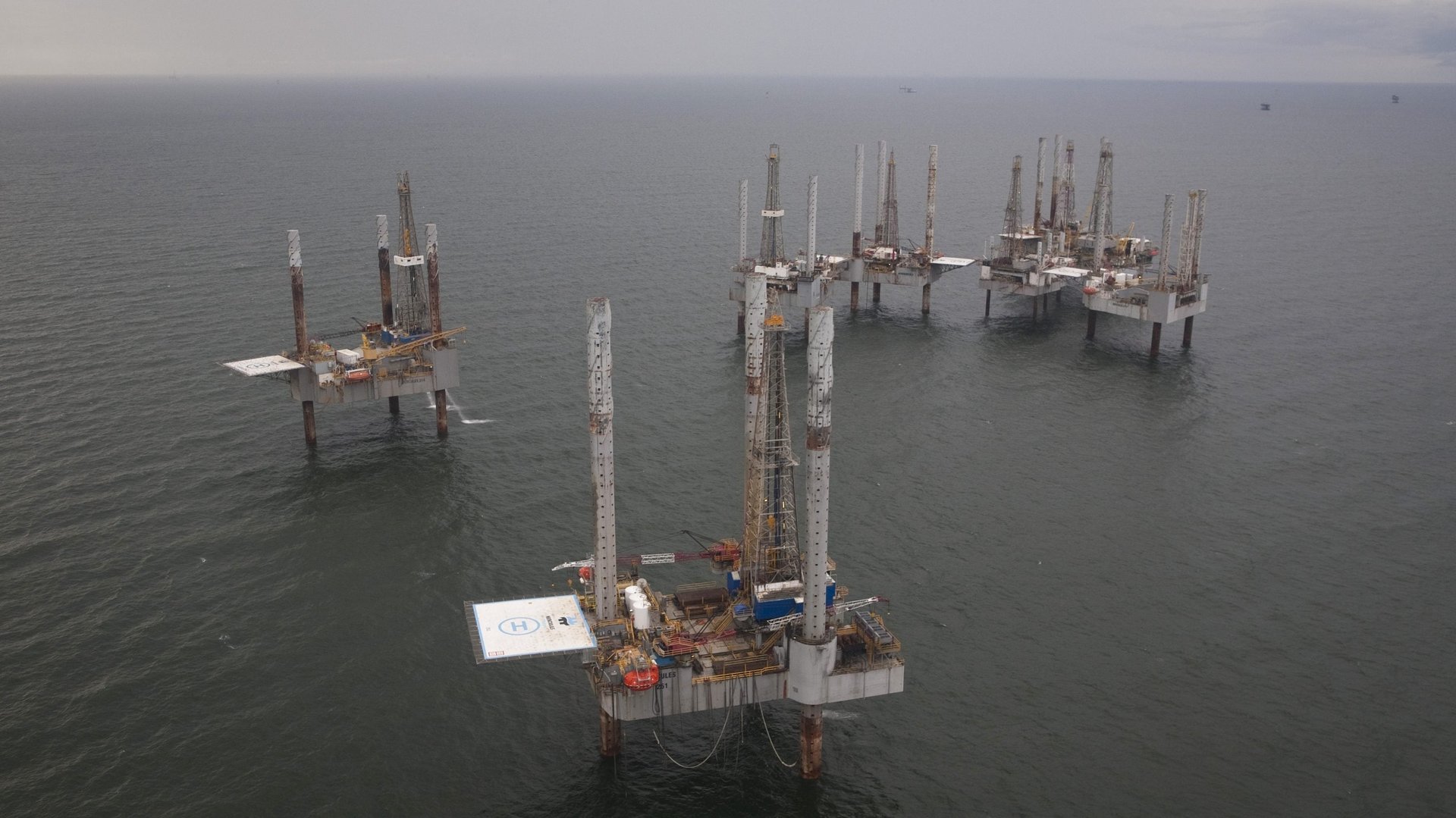The era of new drilling in the Gulf of Mexico may be over for good
A US federal judge invalidated more than 80 million acres of offshore oil and gas leases in the Gulf of Mexico on Jan. 27. The leases were sold in November to oil majors Shell, BP, Chevron, and Exxon at an auction that raised the hackles of environmentalists because president Joe Biden had previously promised to end new drilling on federal land as a core tenet of his climate change strategy. (A separate court ruling in June in favor of oil-producing states forced the administration to hold the auction.)


A US federal judge invalidated more than 80 million acres of offshore oil and gas leases in the Gulf of Mexico on Jan. 27. The leases were sold in November to oil majors Shell, BP, Chevron, and Exxon at an auction that raised the hackles of environmentalists because president Joe Biden had previously promised to end new drilling on federal land as a core tenet of his climate change strategy. (A separate court ruling in June in favor of oil-producing states forced the administration to hold the auction.)
The judge’s reason for canceling the leases, he wrote in his ruling, was that the Interior Department (DOI) had not adequately accounted for damage to the climate that would be caused by the carbon emissions of oil extracted from the Gulf. DOI officials must now return to the drawing board, produce a new impact assessment, and decide again whether the benefits of the leases outweigh their costs.
That new assessment is likely to be grim for oil producers. In May, the International Energy Agency concluded that limiting global warming to the Paris Agreement goal of 1.5 Celsius above pre-industrial levels is achievable only if “there are no new oil and gas fields approved for development” after 2021. It’s unlikely that DOI will produce an assessment that finds room for new Gulf drilling that’s compatible with the administration’s climate commitments.
Either way, the process of drafting a new review and scheduling a new sale (if that’s what DOI were to decide) could take years. By that time, there may not be much appetite for the leases anyway. With the long-term outlook for oil demand uncertain, pressure to reduce emissions rising, and shareholders demanding better returns on existing investments, most oil companies are limiting their spending on new drilling projects, especially expensive ones like offshore rigs. When former US president Donald Trump offered 1 million acres for drilling in Alaska in the final days of his term, he got hardly any bids.
So whether limited by law or by economics, the number of wells tapping the Gulf of Mexico may have already peaked.